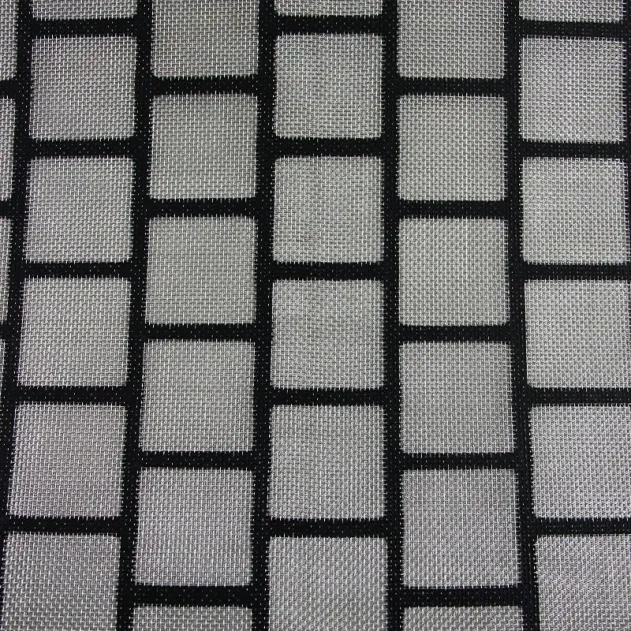- Industrial zone, South of Anping Town, Hengshui, Hebei, China.
- sales@hfpetromesh.com
- +86-18931809706
 Afrikaans
Afrikaans  Albanian
Albanian  Amharic
Amharic  Arabic
Arabic  Armenian
Armenian  Azerbaijani
Azerbaijani  Basque
Basque  Belarusian
Belarusian  Bengali
Bengali  Bosnian
Bosnian  Bulgarian
Bulgarian  Catalan
Catalan  Cebuano
Cebuano  Corsican
Corsican  Croatian
Croatian  Czech
Czech  Danish
Danish  Dutch
Dutch  English
English  Esperanto
Esperanto  Estonian
Estonian  Finnish
Finnish  French
French  Frisian
Frisian  Galician
Galician  Georgian
Georgian  German
German  Greek
Greek  Gujarati
Gujarati  Haitian Creole
Haitian Creole  hausa
hausa  hawaiian
hawaiian  Hebrew
Hebrew  Hindi
Hindi  Miao
Miao  Hungarian
Hungarian  Icelandic
Icelandic  igbo
igbo  Indonesian
Indonesian  irish
irish  Italian
Italian  Japanese
Japanese  Javanese
Javanese  Kannada
Kannada  kazakh
kazakh  Khmer
Khmer  Rwandese
Rwandese  Korean
Korean  Kurdish
Kurdish  Kyrgyz
Kyrgyz  Lao
Lao  Latin
Latin  Latvian
Latvian  Lithuanian
Lithuanian  Luxembourgish
Luxembourgish  Macedonian
Macedonian  Malgashi
Malgashi  Malay
Malay  Malayalam
Malayalam  Maltese
Maltese  Maori
Maori  Marathi
Marathi  Mongolian
Mongolian  Myanmar
Myanmar  Nepali
Nepali  Norwegian
Norwegian  Norwegian
Norwegian  Occitan
Occitan  Pashto
Pashto  Persian
Persian  Polish
Polish  Portuguese
Portuguese  Punjabi
Punjabi  Romanian
Romanian  Russian
Russian  Samoan
Samoan  Scottish Gaelic
Scottish Gaelic  Serbian
Serbian  Sesotho
Sesotho  Shona
Shona  Sindhi
Sindhi  Sinhala
Sinhala  Slovak
Slovak  Slovenian
Slovenian  Somali
Somali  Spanish
Spanish  Sundanese
Sundanese  Swahili
Swahili  Swedish
Swedish  Tagalog
Tagalog  Tajik
Tajik  Tamil
Tamil  Tatar
Tatar  Telugu
Telugu  Thai
Thai  Turkish
Turkish  Turkmen
Turkmen  Ukrainian
Ukrainian  Urdu
Urdu  Uighur
Uighur  Uzbek
Uzbek  Vietnamese
Vietnamese  Welsh
Welsh  Bantu
Bantu  Yiddish
Yiddish  Yoruba
Yoruba  Zulu
Zulu
- Afrikaans
- Albanian
- Amharic
- Arabic
- Armenian
- Azerbaijani
- Basque
- Belarusian
- Bengali
- Bosnian
- Bulgarian
- Catalan
- Cebuano
- Corsican
- Croatian
- Czech
- Danish
- Dutch
- English
- Esperanto
- Estonian
- Finnish
- French
- Frisian
- Galician
- Georgian
- German
- Greek
- Gujarati
- Haitian Creole
- hausa
- hawaiian
- Hebrew
- Hindi
- Miao
- Hungarian
- Icelandic
- igbo
- Indonesian
- irish
- Italian
- Japanese
- Javanese
- Kannada
- kazakh
- Khmer
- Rwandese
- Korean
- Kurdish
- Kyrgyz
- Lao
- Latin
- Latvian
- Lithuanian
- Luxembourgish
- Macedonian
- Malgashi
- Malay
- Malayalam
- Maltese
- Maori
- Marathi
- Mongolian
- Myanmar
- Nepali
- Norwegian
- Norwegian
- Occitan
- Pashto
- Persian
- Polish
- Portuguese
- Punjabi
- Romanian
- Russian
- Samoan
- Scottish Gaelic
- Serbian
- Sesotho
- Shona
- Sindhi
- Sinhala
- Slovak
- Slovenian
- Somali
- Spanish
- Sundanese
- Swahili
- Swedish
- Tagalog
- Tajik
- Tamil
- Tatar
- Telugu
- Thai
- Turkish
- Turkmen
- Ukrainian
- Urdu
- Uighur
- Uzbek
- Vietnamese
- Welsh
- Bantu
- Yiddish
- Yoruba
- Zulu
Exploring the Benefits of 15W4% Grating in Modern Applications
Exploring the 15W 4% Grating A Versatile Tool in Optical Engineering
In the field of optical engineering, the refinement of light manipulation has always been a priority for researchers and industry professionals alike. Among the plethora of tools available, gratings have emerged as indispensable components, crucial for various applications in spectroscopy, telecommunications, and laser technology. One particular type of grating gaining attention is the 15W 4% grating, a versatile tool that promises to enhance optical performance across multiple domains.
Exploring the 15W 4% Grating A Versatile Tool in Optical Engineering
The 15W designation represents a grating with 15 grooves per millimeter, a meticulous configuration that strikes an excellent balance between resolution and efficiency. This groove density is particularly advantageous in analytical spectroscopy, where high precision is essential for identifying and quantifying substances. The 4% efficiency, while seemingly modest, is characteristic of a grating designed to operate effectively across a broad range of wavelengths, making it a valuable asset for both research and practical implementations.
15w4 grating

One of the primary applications of the 15W 4% grating is in the field of spectroscopy. Spectrometers equipped with high-quality gratings can analyze the composition of materials by measuring the wavelengths of light absorbed or emitted by substances. The 15W 4% grating allows for subtle detection of spectral lines, enabling scientists to discern minute differences in chemical compositions. This capability is invaluable in fields such as environmental monitoring, pharmaceuticals, and materials science.
Moreover, telecommunications rely heavily on gratings, particularly in fiber optic networks. Gratings facilitate wavelength division multiplexing (WDM), a technology that allows multiple signals to be transmitted simultaneously over a single optical fiber. The efficiency and groove density of the 15W 4% grating ensure that data integrity is maintained, even when multiple channels are operating in concert. This capability is crucial as the demand for higher bandwidth continues to rise in our increasingly digital world.
Manufacturing and research industries are also leveraging the versatility of the 15W 4% grating in laser applications. The ability to finely control the wavelengths emitted by lasers is fundamental to various technologies, including laser cutting, medical lasers, and high-precision imaging systems. The specific characteristics of the 15W 4% grating enable researchers to develop tailored solutions that enhance the performance of these systems.
In conclusion, the 15W 4% grating represents an essential component in the toolkit of optical engineers and scientists. Its specific groove density and efficiency make it suitable for a range of applications across spectroscopy, telecommunications, and laser technologies. As the demand for precision and efficiency continues to grow in various fields, the role of gratings like the 15W 4% will undoubtedly become more prominent, driving innovation and enhancing technological capabilities. The future of optical engineering looks bright, with tools like the 15W 4% grating at the forefront of this evolving landscape.
-
Welded Steel Bar Grating: The Rugged Industrial Flooring Solution Built for Load and LongevityNewsJun.24,2025
-
Steel Walkway Grating: Reliable, Resilient, and Built for Every StepNewsJun.24,2025
-
Shale Shaker Screen for Sale: Optimize Drilling Efficiency with Precision Screening PowerNewsJun.24,2025
-
Shaker Screen for Sale: Elevate Your Drilling Efficiency with Durable Separation SolutionsNewsJun.24,2025
-
Press Locked Steel Grating: Industrial Strength with Precision Fit for Heavy-Duty ApplicationsNewsJun.24,2025
-
Perimeter Safety Netting: The Critical Safety Upgrade for Every HelipadNewsJun.24,2025